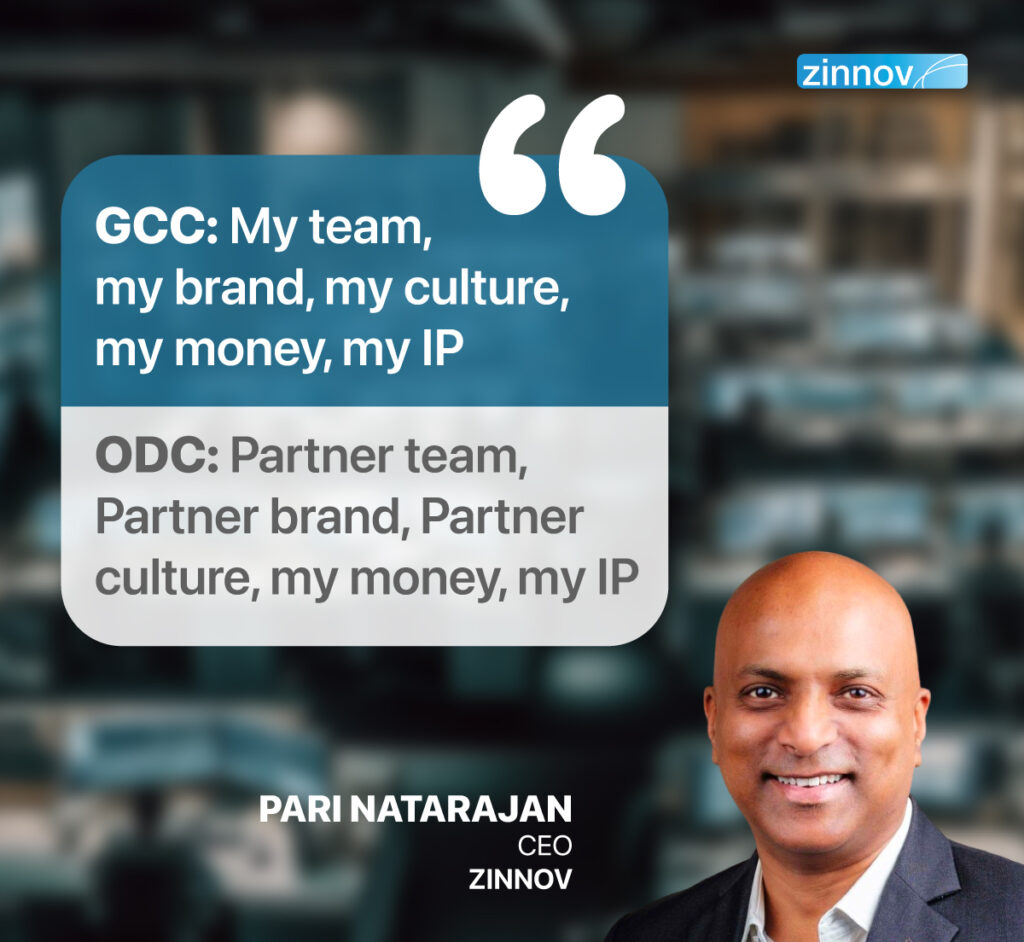|
|
In an increasingly complex and competitive market environment, leaders are plagued by three key considerations to stay ahead: optimizing revenue and costs, driving innovation, and ensuring business continuity. While these are not new business challenges, the need for speed in solving them is more crucial than before. Interestingly, the solution lies in leveraging Offshore Development Center (ODC).
An Offshore Development Center (ODC) refers to a strategic model where organizations deploy a dedicated team of highly skilled professionals, set up in a location and time zone that is different from headquarters (HQs). While managed by a Partner organization, these teams are integral to achieving key business goals. This arrangement may resemble traditional outsourcing, but with a crucial distinction: unlike outsourcing, which can occur within the same country, an ODC is inherently international, capitalizing on global talent pools to optimize operations and innovate beyond borders. Essentially, ODCs represent the evolution of outsourcing into a globally dispersed, yet tightly integrated, component of modern business strategy. The best way to think of an Offshore Development Center is ‘International Outsourcing.’

Initially carved out for Software and IT services, ODCs have now transcended these boundaries to encompass a wide array of business functions, evolving into powerhouses of innovation. They serve as central hubs, spearheading product and process advancements for their parent companies. Industry giants such as Google, Microsoft, Sony, Toyota, PepsiCo, SAP, and Walmart are harnessing the prowess of ODCs, tapping into the global talent pool and resources to propel their growth, foster innovation, and maintain a competitive edge in the global market.
Setting up an Offshore Development Center (ODC) provides a multitude of benefits. Firstly, by traversing international waters, access to highly skilled talent becomes easier, at scale and cost. For example, countries like India and Poland have a large amount of technology talent, whose expertise spans across domains including Generative AI, AR/VR, Software, Engineering R&D, and modern technologies like Cloud and Quantum Computing. By offshoring part or full operations into these geographies, companies drive their innovation and growth charters, fueling sustained competitive advantage.
An Offshore Development Center also allows companies to benefit from cost-efficient market expansions by leveraging regulation, compliance, and infrastructure benefits offered in some locations. According to Zinnov’s analysis, setting up centers in Vietnam, Mexico, and Costa Rica is cheaper than setting up a center in the United Kingdom or the United States of America- largely due to office rents and legal fees. Additionally, entities set up in certain locations can be fast-tracked due to the ease of doing business in certain locations. This becomes especially advantageous when companies are looking to scale, and scale quickly.
These offshore locations also serve a strategic purpose beyond cost savings – they act as shock absorbers to geopolitical and macroenvironmental volatility, uncertainty, complexity, and ambiguity, ensuring operations can continue regardless. By setting up Offshore Development Centers, organizations can mitigate risks by diversifying their talent across multiple locations. Additionally, if they wish to scale up or scale down teams, ODCs allow for seamless scaling as desired. Offshore Development Centers can be used as a ‘taste of globalization’, where organizations can offshore part functions to evaluate global viability before committing to large-scale offshoring.
One of the biggest benefits of an Offshore Development Center relates to productivity. By setting up teams in different locations, companies can adopt a ‘follow the sun’ model to operations, where a team in one-time zone can begin work on a project, which can then be taken to closure by another team in a different time zone. Take the example of a US-based software developer with an offshore team in the Philippines, working on a new product launch. By leveraging teams working in opposite time zones, the work cycle is extended from an ordinary 10.5 hours to 18 hours.
While the above mentioned benefits make a compelling case for accessing global talent, organizations must be cognizant of the challenges with setting up an Offshore Development Center.
A growing concern with organizations that outsource functions and teams relates to control. Outsourcing (either traditional or through Offshore Development Centers) relies heavily on partners to ensure project delivery, quality assurance, and team management. This creates opportunities for misalignment across key areas that have implications for talent retention and brand. As an alternative, an increasing number of companies are choosing to set up their centers in global locations known as Global Capability Centers (GCC) or Captives. In a GCC, teams are wholly built and managed by the parent organization across all global locations.
Based on costs and times to scale, organizations can choose from a variety of models for setting up their Global Capability Centers. Traditional centers, which are wholly built and owned by the organization can be set up in ~120 days. Alternatively, an accelerator model for center setups uses existing plug-and-play infrastructure which accelerates the time to set up (within 30 days). Recently, global companies are opting for the Employer of Record (EOR) model, which uses an existing legal entity in a target location, that assumes legal responsibility for all HR-related practices across the talent value chain. The biggest benefit of an EOR is that it allows a global company to hire talent from Day 1.
Regardless of the model, leveraging global talent is the need of the hour; it helps companies stay competitive by leveraging capabilities unique to geography. Moreover, risk diversification is a key lever for business continuity in an ever-evolving macroenvironment. To create a successful and scalable model of offshoring, companies need to set clear objectives, conduct a thorough location analysis, attract and retain the right talent, and create robust governance practices that ensure operational efficiencies. Choosing the right partners and vendors is core to building global teams that drive value as well as ensure seamless integration of workflows.